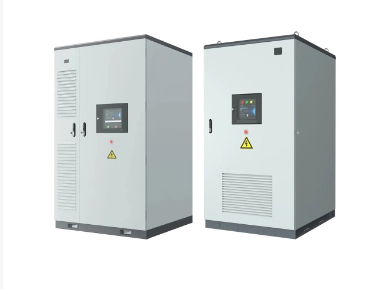Revolutionizing Commercial Energy Management: The Rise of Smart Energy Storage Systems
2025-05-29 14:33

In the rapidly evolving landscape of commercial energy consumption, the integration of Smart Energy Storage Systems (SESS) is emerging as a transformative force. As businesses strive to enhance efficiency, reduce costs, and minimize their environmental footprint, SESS are becoming an indispensable tool in achieving these goals. By intelligently managing energy resources, these systems are redefining how industries approach power usage, offering a pathway to greater sustainability and operational resilience.
At the heart of a Smart Energy Storage System lies its ability to optimize energy flow in real-time. Unlike traditional storage solutions, SESS leverage advanced analytics, machine learning, and automation to dynamically adjust energy consumption and generation patterns. This intelligence allows commercial entities to store excess energy during low-demand periods and dispatch it when demand peaks, effectively smoothing out energy usage and reducing reliance on the grid. For industries with fluctuating energy needs, such as manufacturing or data centers, this capability translates into significant cost savings and improved energy security.
One of the key advantages of SESS in commercial settings is their capacity to integrate seamlessly with renewable energy sources. As businesses increasingly turn to solar panels and wind turbines to meet their sustainability targets, the intermittent nature of these sources poses a challenge. SESS bridge this gap by capturing and storing energy generated during periods of high production and releasing it when generation falls short or demand rises. This not only ensures a consistent and reliable power supply but also maximizes the utilization of renewable energy, driving down carbon footprints and enhancing corporate sustainability credentials.
Moreover, Smart Energy Storage Systems play a pivotal role in enhancing grid stability and resilience. In the event of grid disruptions, these systems can provide backup power, ensuring uninterrupted operations and safeguarding critical infrastructure. This dual functionality makes SESS a strategic asset for businesses looking to future-proof their operations against energy volatility.
The economic benefits of deploying SESS extend beyond immediate cost reductions. By analyzing historical energy data and predicting future trends, these systems enable businesses to make informed decisions about energy procurement, capacity planning, and investment in on-site generation. Furthermore, many regions offer incentives, such as tax credits and subsidies, for adopting energy storage technologies, further enhancing the financial appeal of SESS implementation.
As technology continues to advance, the capabilities of Smart Energy Storage Systems are only expected to grow. Innovations in battery cheistry, such as solid-state batteries and next-generation flow batteries, promise even higher energy densities, faster charging times, and longer lifespans. Coupled with advancements in artificial intelligence and IoT connectivity, SESS will become increasingly adept at optimizing complex energy ecosystems, unlocking new levels of efficiency and control for commercial users.
In conclusion, Smart Energy Storage Systems stand at the vanguard of a new era in commercial energy management. By harnessing the power of intelligence and storage, businesses can navigate the challenges of modern energy consumption with greater agility and sustainability. As the technology matures and its applications broaden, SESS will undoubtedly play a central role in shaping a more efficient, reliable, and green energy future for industries worldwide.
Related News






